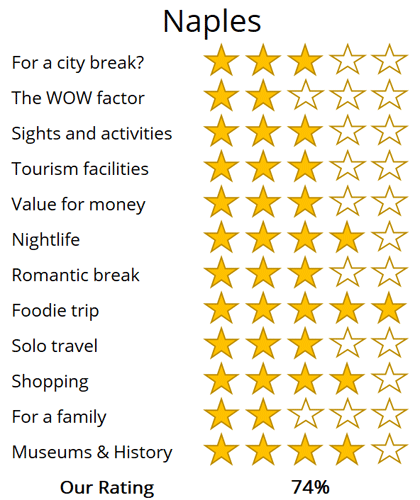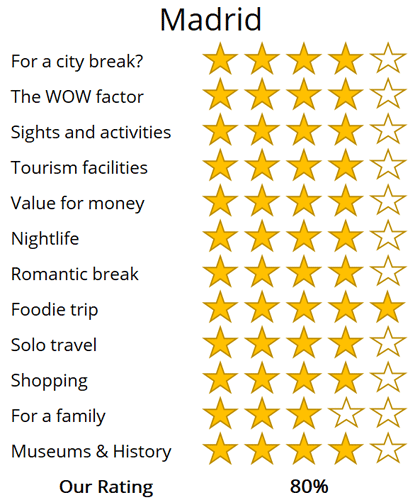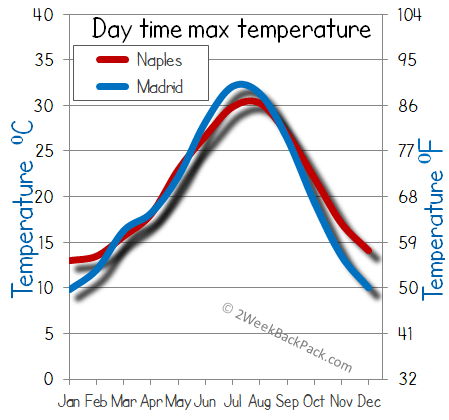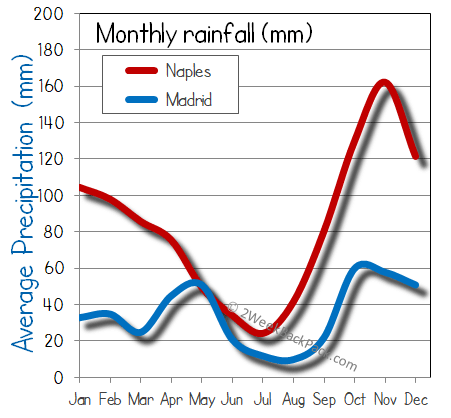WhereToGoForMyHoliday.com
The best destination comparison site!
WhereToGoForMyHoliday.com
The best destination comparison site!
Naples or Madrid, which is better for your holiday in 2024?
Madrid and Naples are fantastic cities, but which is better for your city-break or holiday?
We understand your dilemma. There is an abundance of travel guides for both cities, but few actually comparing them, and advising you which is the better for your trip.
This article will provide our unbiased and independent views of Madrid and Naples, hopefully making your choice that little easier.
The article is structured into several sections, each of which can be directly accessed through the following links:
• Introduction to the cities
• Scores and ratings
• Which one should I, friends, or family visit?
• When to visit and weather
• Who is the city suited for?
• The perfect 48hours (with map)
• Tourism details (where to stay? airport details?)
Introduction to Madrid and Naples
Being the original artisan city of western Europe, Madrid’s galleries and museums are unrivalled, and are a staple for any cultural holiday.
However beneath this formal exterior is a young and passionate city, with thrilling nightlife, delicious food and genuinely welcoming locals.
The visitors who rave most about Madrid are the long-stay residents – and there is something captivating about the city. The Museo del Prado, the Reina Sofía and the Bernabéu Stadium, for a different type of culture. Just avoid Madrid in August, when the entire city shuts down for the summer holidays.
In many ways, Naples is split in two halves; a town of shadow and light.
There's the Naples of pizza dough and La Dolce Vita, which is all about kicking it by the azure Tyrrhenian Sea with good food and great wine.
Then there's the gritty city, whose reputation comes from the Camorra mafiosos and the ramshackle alleys around Spaccanapoli street. Both are immersive and interesting in their own right
Put simply, Naples is one of the most authentic and enthralling cities in Italy. The self-proclaimed capital of the south, it's got Roman history and gorgeous landscapes in equal measure.
It promises something for honeymooners, backpackers, foodies, and outdoorsy types, but won't sugar-coat the experience with anything special for tourists.

The harbour front in Naples

The Plaza Mayor and the historic centre of Madrid
Madrid vs Naples: City Ratings
Summary
Where would I journey for a personal escape?
Madrid
Where would I send my parents for a memorable visit?
Madrid
Where's the ideal destination for my adventurous 19-year-old cousin?
Madrid
Where should my food-obsessed friend indulge their culinary passions?
Naples
Note: The above comparisons are weather-independent and are based on travel during the most opportune times of the year. Details about the ideal travel seasons are elaborated upon later in this article.
In the sections that follow, you'll find a comprehensive comparison between these two fascinating cities. This includes recommendations on the duration of stay, the best times to visit, and tailored 48-hour itineraries for each city.
The final segment delves into practicalities for your travels, such as the best airport to fly into, the optimal districts for your accommodation, and insider tips, for when you come to explore the city.
We hope that you find all of this information useful, in planning your next exciting trip!
Destination details
How long to spend each city?
That's a tricky one. Naples itself can be seen from tip to toe in just a couple of days. We'd say around 48 hours is perfect for tasting Neapolitan pizzas in legendary L'Antica Pizzeria da Michele and feeling the vibes down lively Spaccanapoli – the main drag in the historic centre.
For a longer stay of five to seven days, there's a catch: A lot of Naples's main draws are outside of town. Think the likes of Pompeii, the soaring crater of Vesuvius, and the Amalfi Coast. To add those on, you'll need to plan to come here for considerably more time.
For Madrid, the length of stay greatly depends on how much you want to devote to visit the three famed art galleries (Prado Museum, Thyssen-Bornemisza and Reina Sofía), or immerse into Spanish culture. The city can be seen in two days of sightseeing, and a third day is often given to the galleries.
There are many outstanding day trips from Madrid and a trip can be easily extended to 5 or 6 days. A selection of the best day trips includes the medieval town of Segovia, charming Toledo, and the magnificent El Escorial. Madrid makes for a good base from which to explore the region, and is served by inexpensive public transport
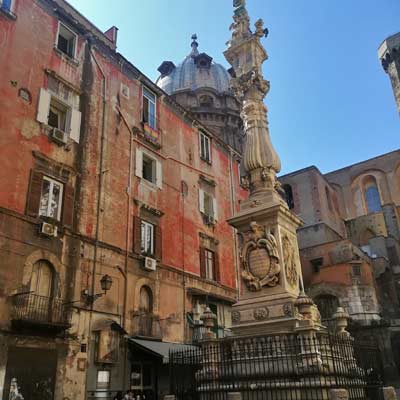
The obelisk of San Gennaro in the Piazza Riario Sforza
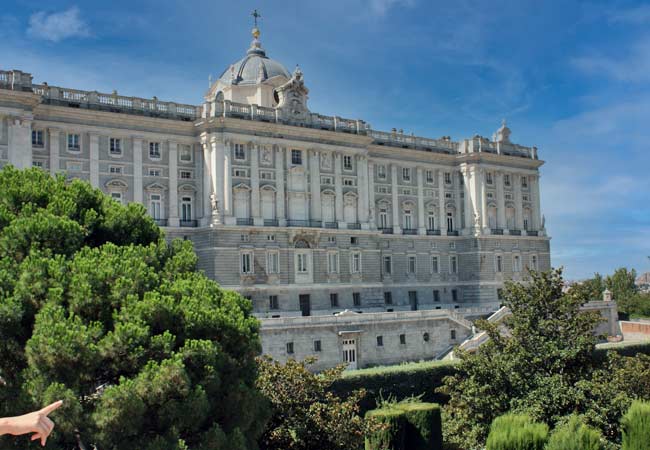
The magnificent Palacio Real in Madrid
Spring is the best time of year in Naples. This southern city gets warm nice and early, so you can expect April highs in the 20s and even enough sun to hit the beaches of Gaiola and the local lidos if you want to take a dip in the Med. There are fewer other travellers about before the summer rush too, which means you'll find it more pleasant strolling the historic centre and Pompeii.
Of course, that's not to say the summer is bad in these parts. It most certainly isn't. Reliable warmth and loads of sunshine, topped off with a buzz about town, help make the months between June and August great options. Just be prepared to pay extra for hotels and flights, and don't expect the city to be quiet.
The major consideration for Madrid, is to avoid August. The entire city shuts down for the month, and everyone heads to the slightly cooler coastal towns.
The best time of year for Madrid is late spring (Jun/Jul) or early autumn. Madrid can be surprisingly chilly in the winter, but is comparatively drier and milder than the rest of northern Europe. As Madrid is in the centre of the Iberian Peninsula, it tends to get more extreme weather than the coastal cities.
Madrid is one of the finest cities in Europe. The city may not have the iconic monuments and attention-grabbing tourist attractions, but in reality, there is a lot to see during a city break.
Much of Madrid’s tourist literature focuses on the museums and galleries (which are world-class), but this should not deter you; this is a fun-loving city, which has the best nightlife in Europe. No matter your style of trip, there will be something to love about the Spanish capital.
Madrid excels as a long-stay destination, and if you can work here, the city offers the perfect work/life balance.
Naples is a raw and immersive Italian city. It's got pizza places that are frequented by locals. It's got wine bars serving gorgeous Campanian tipples. It's lived-in and gritty and real. That makes it perfect for city hoppers who like atmosphere and energy. And the joys don't end there…
Just around the Bay of Naples are two of the country's most impressive archaeological sites: Pompeii and Herculaneum. They'll entertain the history lovers, along with the likes of the Castel dell'Ovo and the vast Museo Archeologico Nazionale. Loved-up duos might also want to make Naples a pitstop on a couple's break to the impossibly gorgeous Amalfi Coast that lies to the south.
Naples isn't for those who like small, easy-going towns where there's lots of room. It's crammed between the volcanos and the sea, so things are compact in the centre. It can also be quite hectic, with touts and traffic.

The Museo Nacional del Prado, is one of the finest art galleries in the world
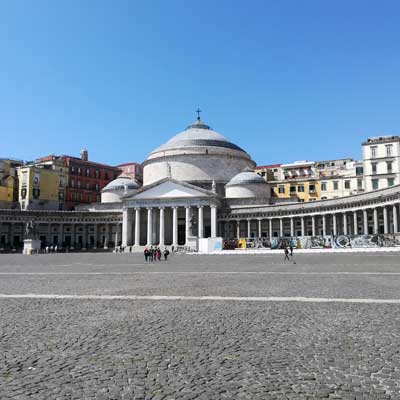
The Piazza Plebiscito is the grand square of Naples
Everything from millennia-old villas to rich art collections is on offer in this 48-hour guide to Naples. Oh, and there are plenty of chances to devour pizza – it's considered the very best in Italy.
Day 1: Start in the Quartieri Spagnoli. Ramshackle and rough around the edges, it's the perfect combo of Neapolitan grit and charm. There's bound to be a cafeteria serving cannoli (crunchy Sicilian pastries) and cappuccino there that takes your fancy.
You'll need the energy, because your next destination is the acclaimed Naples National Archaeological Museum. It's known to have one of the largest collections of Roman artifacts anywhere in the world, but the standout highlight is surely the Alexander Mosaic, reconstructed from the floors of Pompeii's opulent House of the Faun.
Once you're done in there, head south to the sleepless street of Spaccanapoli. Literally meaning 'the street that divides Naples', it does exactly as that implies. It runs right through the heart of the city, with drooping washing lines, street-food vendors and age-old churches looming on both sides. It will take a while to walk its two kilometres but it's all about breathing in the urban energy. What's more, the iconic L'Antica Pizzeria da Michele sits at the eastern end.
You'll be rewarded there by one of the best pizzas in town – choose between marinara (just fresh tomato passata and garlic) and bufalina (with buffalo mozzarella). After lunch, make for the port area.
That's crowned by the turrets of the Castel Nuovo, a grand fortification that has a history of more than 800 years. Behind that comes vast Piazza del Plebiscito. Prepare to be stunned by its sheer size and grand horse statues. For evening, a few cocktails and some tasty homecooked pasta awaits in the osterias of stylish Chiaia district.
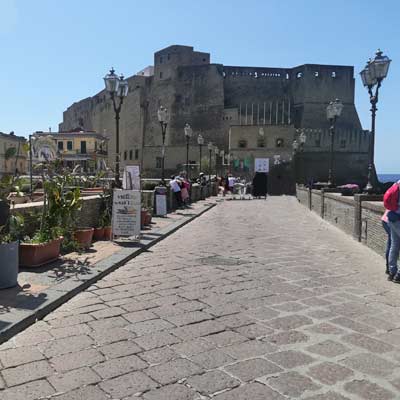
The Castel dell'Ovo (Egg castle) on the harbour front of Naples
Day 2: Rise early and get to the platforms of Naples Centrale station. That's where the trains depart for Pompeii in the morning. You might just have heard of that place – it was once an entire Roman resort town for the nobles and elite of the empire.
That is, until Mount Vesuvius suddenly erupted in 79 AD and flooded it with lava and ash. These days, the site is an amazing and haunting archaeological dig, with whole streets, entire villas, and even brothels complete with Roman wall art just waiting to be discovered.
It's likely Pompeii will take more than half of the day, while the most devoted history buffs can add on a trip to Herculaneum to boot. If not, head back to Naples city and go straight to the hilltops where the Castle of St Elmo keeps watch. That's the Vomero district, and it's famed for its sweeping panoramas of the Gulf of Naples and Mount Vesuvius. With that as the backdrop, find yourself a traditional trattoria or pizzeria and dine with a view of the metropolis to cap off the trip.

Pompeii was covered in 6m of volcanic ash when Mount Vesuvius erupted in AD 79
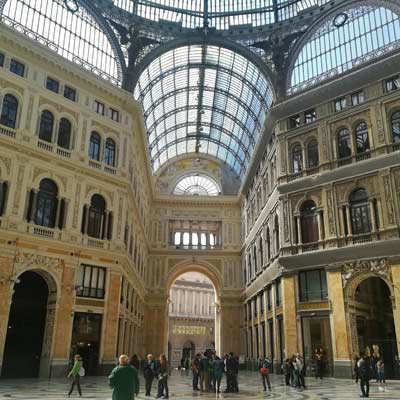
The elegant Galleria Umberto I shopping gallery in Naples
Madrid
48 hours in Madrid is not just the sights but also the atmosphere of the city. Below is an interactive tour map - day 1 is highlighted in green and day 2 in yellow, with optional sights marked grey.
Day 1 - 1) Puerta del Sol 2) Plaza Mayor 3) Plaza de la Villa 4) Mercado de San Miguel 5) Plaza de Oriente 7) Palacio Real 8) Almudena cathedral 9) Basílica de san Francisco 10) Calle de la Cava Alta
Day 2 - 11) Prado museum 12) Thyssen-Bornemisza Museum13) Museo Nacional Reina Sofía 14) Parque de El Retiro 15) Puerta de Alcalá 16) Palacio de Cibeles 17) Gran Vía 18) Malasaña district 19) Plaza de España 20) Templo de Debod
The 48 hours in Madrid begins in the Puerta del Sol, then wanders through charming streets of the El Madrid de los Austrias, which is the oldest section of the city. This leads to the Palacio Real, surrounded by its formal gardens and the Catedral de la Almudena to the south.
For the last part of the day explore the La Latina district and have a delicious tapas meal at one of the restaurants along the Cava Alta or Cava Baja. La Latina boasts numerous bars and is always a great place to start a night in Madrid.
The morning of the second focuses on the three art-museums, the Prado Museum, Thyssen-Bornemisza and Reina Sofía. Close to the museums is the pretty the El Retiro Park.
For the afternoon head down the Gran Vía, the main shopping street of Madrid, and visit the Malasaña district, with its artisan vibe, independent shops and trendy nightlife. For sunset watch it at the Templo de Debod, and then head back to Malasaña for a memorable meal and evening.

The atmospheric Templo de Debod, is Egyptian temple which was moved to Madrid in 1968, due to the construction of the Aswan dam (which would have flooded the temple)

The Gran Vía is the bustling main avenue of Madrid
If you choose a good season to visit, then Madrid is ideal for a city break. There is just one airport severing Madrid and is only 13km from the historic centre. For onward travel take the metro (€1.50 single – 30 minutes). For flights, there is always high demand for Friday/Sunday flights to/from Madrid, so if planning a city break always book at least 6-8 weeks in advance.
On initial appearance Madrid seems to have ample supply of hotel and rental rooms, but this is slightly misleading, as the city is so sprawling.
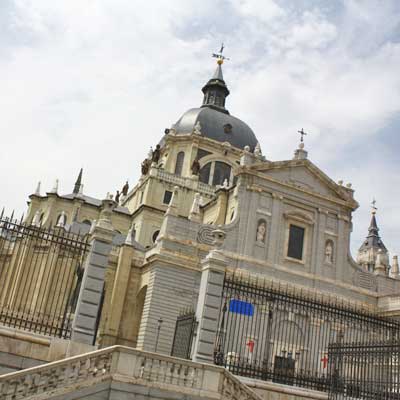
The Catedral de la Almudena
For your first visit, you would want to be based in the Centro or Retiro districts, and this will limit accommodation options. If you do wish a more remote, budget option always ensure it is close to a metro station. While exploring Madrid, you will do a surprising amount of walking.
Capodichino Airport, or Naples Airport, is the main gateway to the city by air. It's the fifth largest in the country, so should have lots of low-cost and premium services jetting into its runways. There's a metro line to the terminal in the works, but for now arrivals will need to use the Alibus to Naples Centrale station. Tickets cost about €5 each way and the travel time is roughly 15 minutes outside of rush hours.
Centrale Station is a main stop on the north-south railway line through Italy. It's easy to get there on high-speed links from Rome and even Milan. That's one of the most glamourous ways to arrive in Campania, offering gorgeous views of the countryside before pulling right into the heart of the city.
When it comes to booking hotels in Naples, take some time to consider each neighbourhood one by one. Most travellers are drawn to the Historic Centre (or Centro Storico in local speak). That's the home of the Duomo and the buzzing lane of Spaccanapoli.
It's probably one of the pricier and more lively areas to stay. Alternatively, go to Vomero for boutique B&Bs with great views, not to mention proximity to some of the coolest hipster eateries and cafes. Or, choose the down-to-earth Quartieri Spagnoli, which is filled with hostels and guesthouses that shouldn't break the bank.
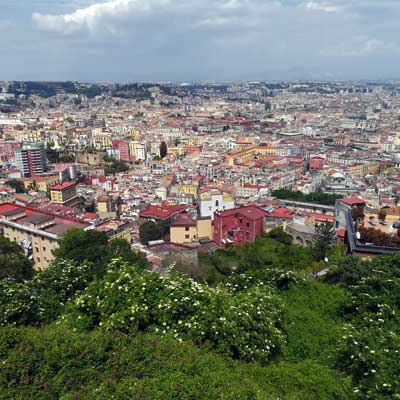
The view over Naples from the surrounding hills
Naples has a reputation for being Italy's roughest and most dangerous place.
It's true that crime rates are higher here than in the north. What's more, the mafia are still in action in these parts. You'll want to be a little more careful walking around areas like the Naples Centrale station and Quartieri Spagnoli.
Also try to stick to more touristy central districts, and don't walk alone at night. On top of that, be wary of street touts selling stolen goods, and be on the guard for pickpockets and drive-by thieves on scooters.
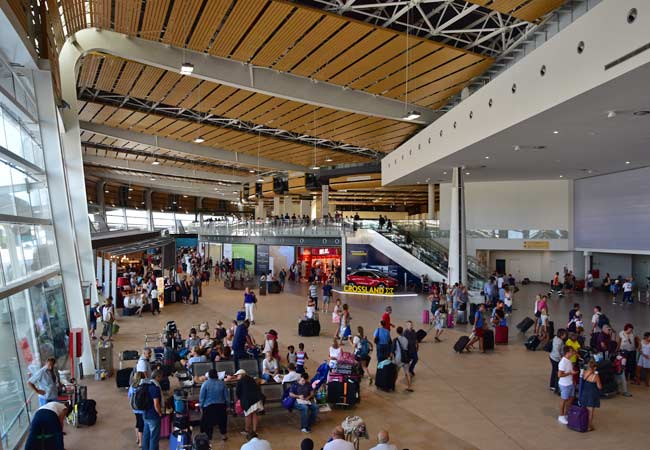
oh we were stuck in the airport!

Copenhagen was a bit expensive...

All we did was drink beer in Brussels...
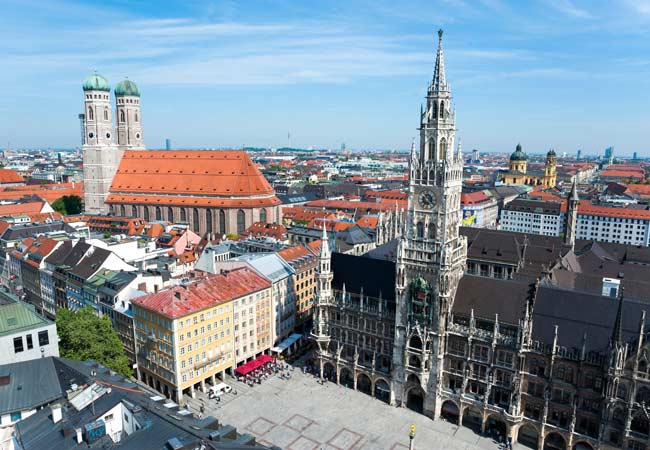
Muncih was crazy
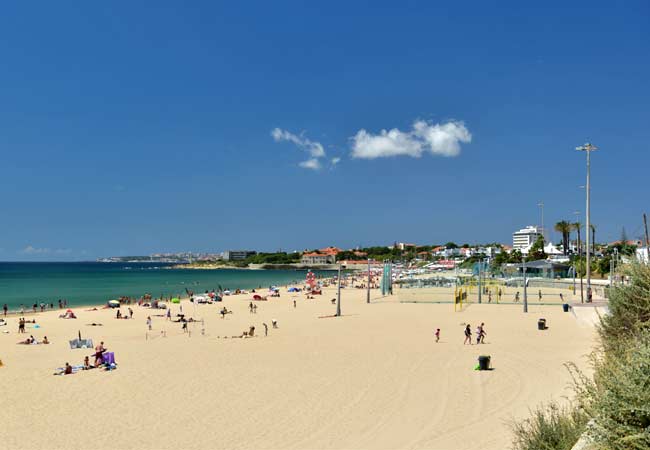
And we got so burnt!
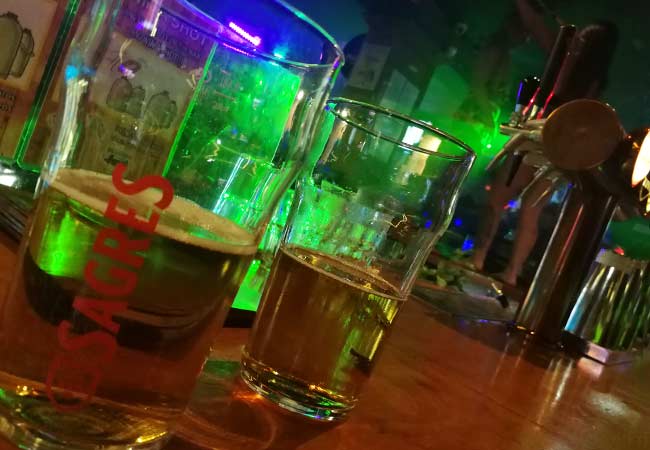
Remeber that night in Rome

oh we were stuck in the airport
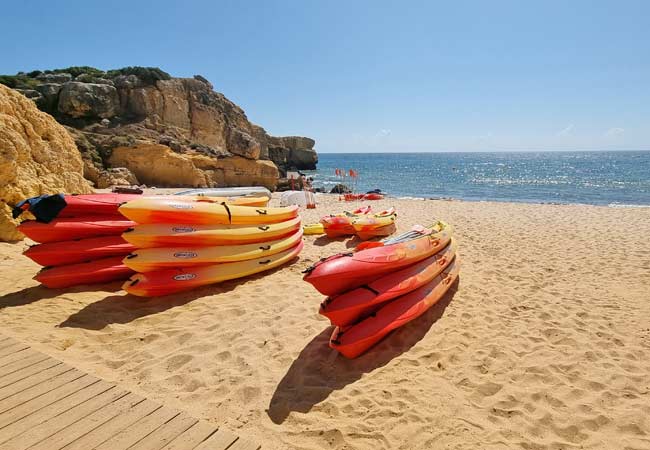
So much fun kayaking

Berlin and that group from Austria!

There was such a view from that church

And we got so burnt!

Munich was eventful, wasn't it!

Such a view from that cathedral in Florence
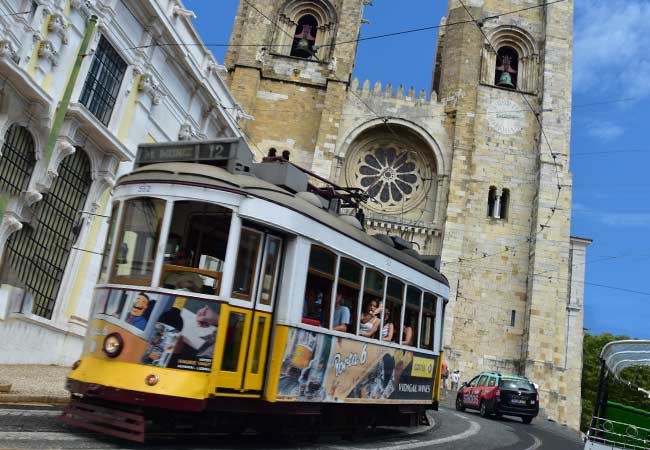
Lisbon was such so much fun

Last summer was so much fun .... x

Remeber that night in Rome

Lisbon was such so much fun

Such a view from that cathedral in Florence

Munich was eventful, wasn't it!

And we got so burnt!

Remeber that night in Rome

All we did was drink beer in Brussels...

Berlin and that group from Austria!

Can't wait to go back to Dubrovnik

Remember that boat ride in Prague

Copenhagen was a bit expensive...
